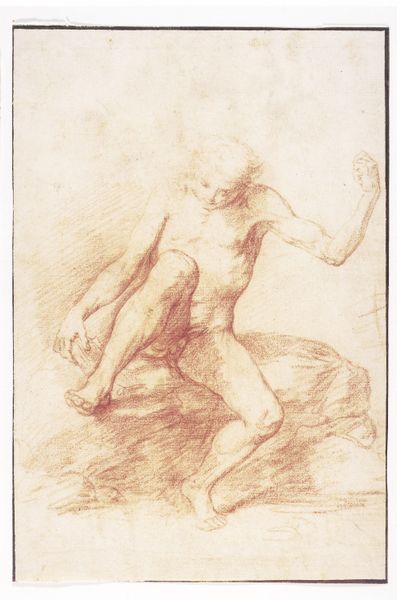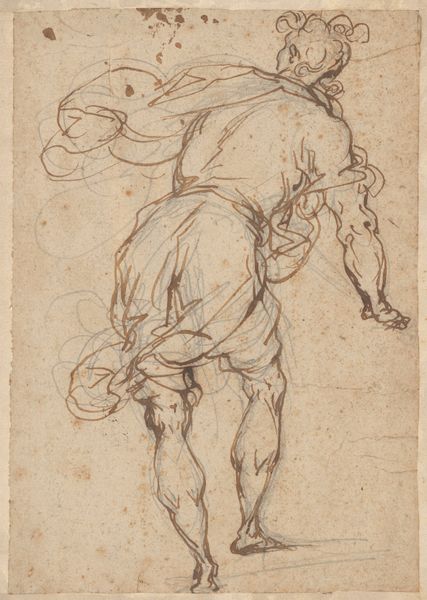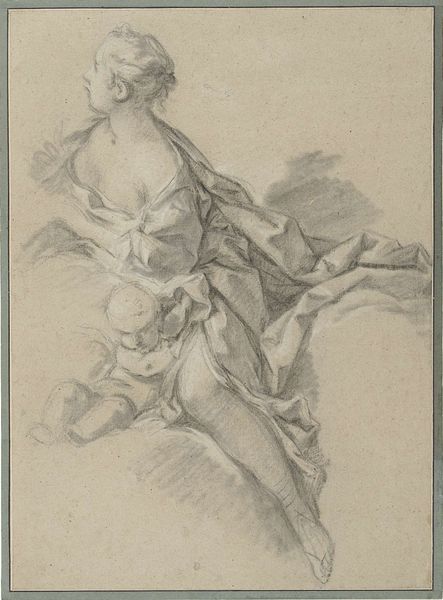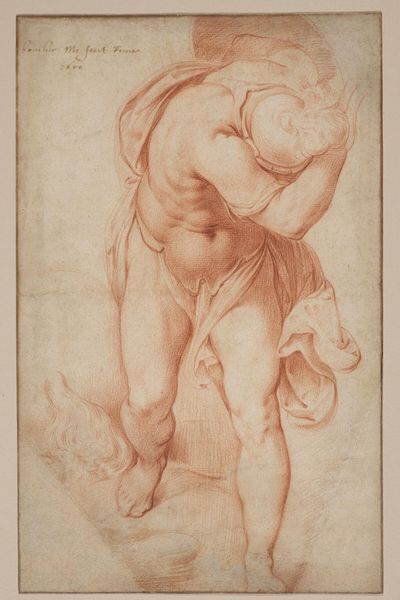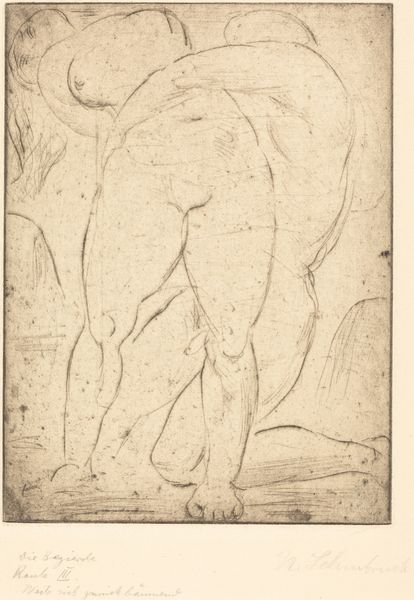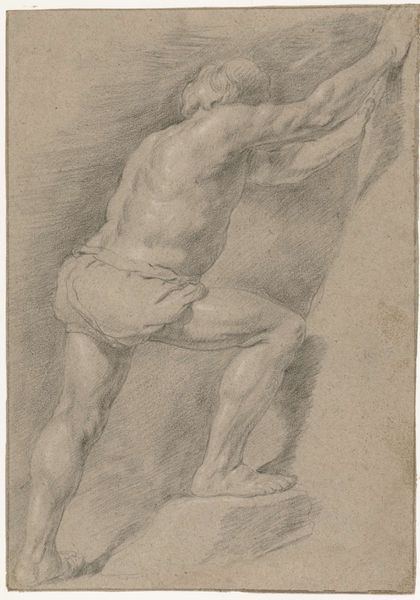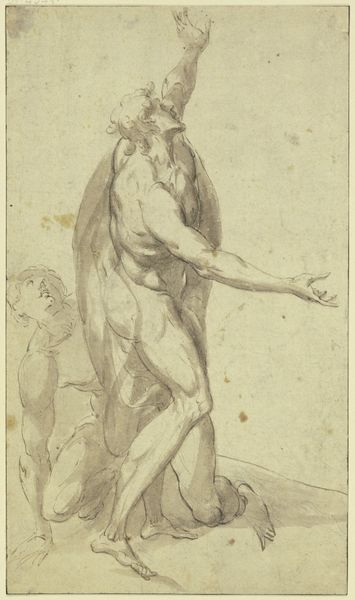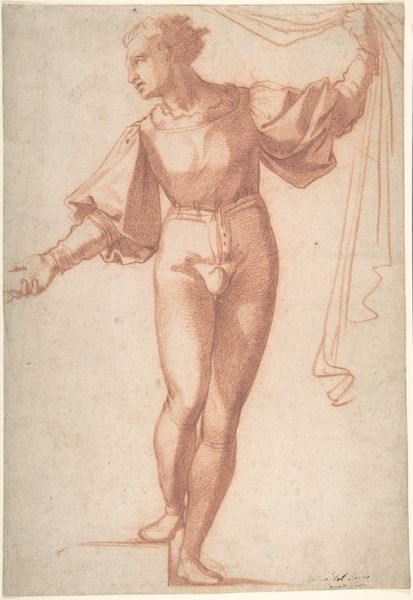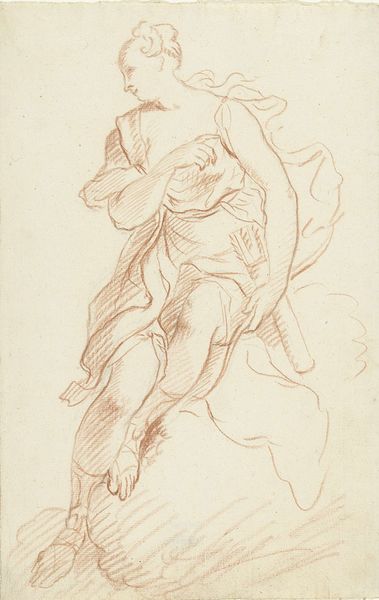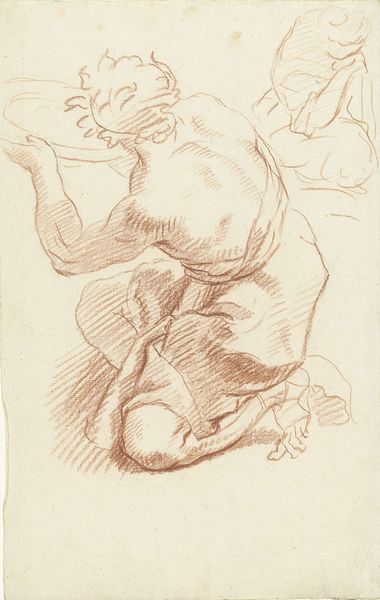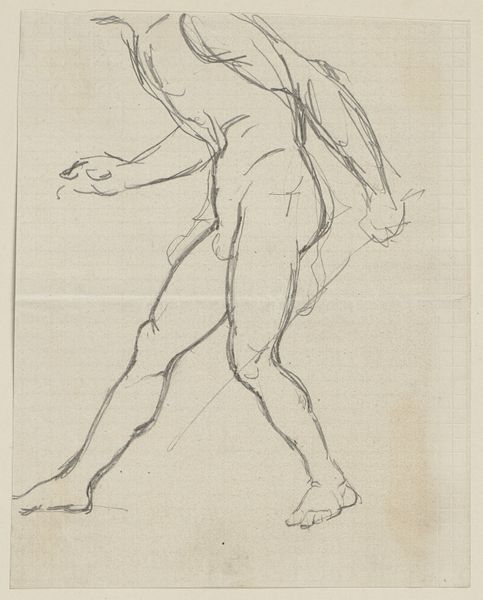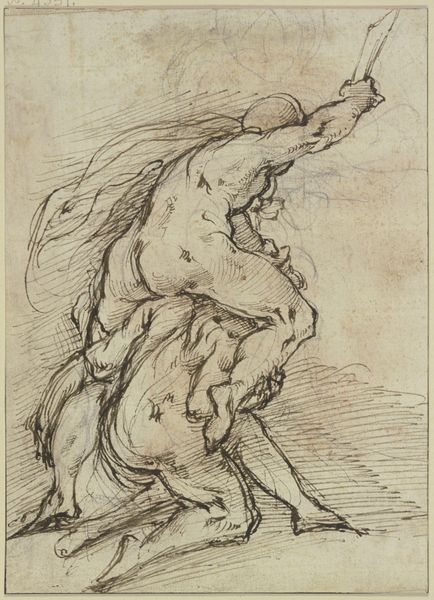![['Study of a kneeling huntman', 'Design for the illustration of "Les Plaisirs de l\'Ile Enchantée\'\' from the 1734 edition of Molière\'s works (vol. III, p. 104)'] by Francois Boucher](/_next/image?url=https%3A%2F%2Fd2w8kbdekdi1gv.cloudfront.net%2FeyJidWNrZXQiOiAiYXJ0ZXJhLWltYWdlcy1idWNrZXQiLCAia2V5IjogImFydHdvcmtzLzQwZWJhZmY3LWM3M2ItNGQwNS1iODFjLTRiN2ZlM2I4YzRhMC80MGViYWZmNy1jNzNiLTRkMDUtYjgxYy00YjdmZTNiOGM0YTBfZnVsbC5qcGciLCAiZWRpdHMiOiB7InJlc2l6ZSI6IHsid2lkdGgiOiAxOTIwLCAiaGVpZ2h0IjogMTkyMCwgImZpdCI6ICJpbnNpZGUifX19&w=3840&q=75)
['Study of a kneeling huntman', 'Design for the illustration of "Les Plaisirs de l\'Ile Enchantée\'\' from the 1734 edition of Molière\'s works (vol. III, p. 104)'] 1713 - 1734
0:00
0:00
francoisboucher
Rijksmuseum
drawing, paper, pencil
#
drawing
#
figuration
#
paper
#
pencil
#
rococo
Dimensions: height 272 mm, width 182 mm
Copyright: Rijks Museum: Open Domain
Editor: This is a red chalk drawing by François Boucher, dating from 1713 to 1734. It's called "Study of a Kneeling Huntman" and was actually a design for an illustration in Molière’s works. It's intriguing, how this drawing feels both spontaneous and carefully planned. What strikes you most about its historical context? Curator: Considering Boucher's involvement in illustrating Molière's works, we see the intersection of visual art and popular theatre culture of the 18th century. How did the socio-political landscape of the time influence the perception and reception of these works, especially within aristocratic circles? Boucher catered to their tastes, so how did he negotiate artistic expression with those of patronage? Editor: That's a fascinating point. So, was this image then about affirming the power of the elite through theatrical performances? Curator: Potentially. It certainly reflects a Rococo aesthetic embraced by the elite, known for its emphasis on leisure, elegance, and playful themes. What implications does the choice of such a refined style have on the subject matter: a huntman, ostensibly connected to nature and labor? Is this then simply an exercise in artistic mastery? Or, does it suggest more, about societal roles and power dynamics viewed through a lens of spectacle and amusement? Editor: That’s a lot to consider. So, by looking at this drawing, we're not just seeing a huntman, but an insight into how the aristocracy wanted to see themselves reflected in art and theatre? I guess I never thought of Boucher’s art as being politically charged before! Curator: Exactly! And by delving into the context, we reveal these power dynamics that shaped the artist’s creative choices. This work invites questions about representation and how institutions and social forces mediate artistic expression. Editor: Thanks for this interpretation, it opened a new way for me to appreciate Boucher’s intentions and cultural impact.
Comments
No comments
Be the first to comment and join the conversation on the ultimate creative platform.
